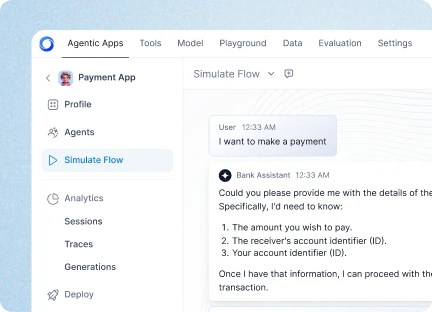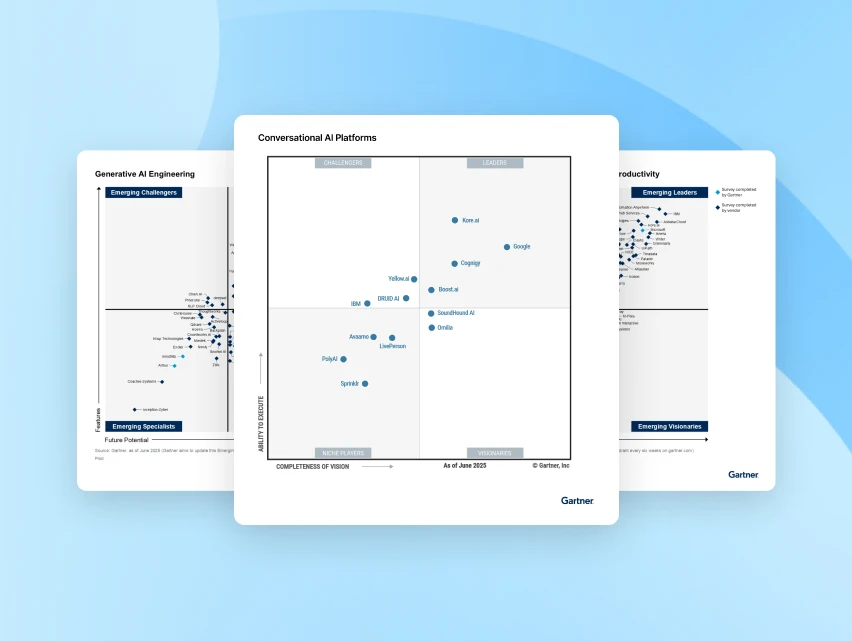Healthcare Contact Center Automation with Contact Center AI
Healthcare is going through a massive shift. Patients today expect the same level of speed, convenience, and personalization they experience with consumer apps and digital services. But most healthcare contact centers are still dealing with:
- Surging call volumes
- Long wait times
- Limited staff capacity
- Fragmented systems and manual processes
In this context, healthcare contact center automation and digital deflection are no longer “good to have” – they’re essential to delivering safe, timely, and empathetic patient experiences at scale.
This article explores how a solution like Contact Centre AI can transform a traditional healthcare contact center into a modern, AI-powered engagement hub that supports patients across their entire journey.
Why Healthcare Contact Centers Are Under Pressure
For most hospitals, clinics, and healthcare networks, the contact center is the first line of patient engagement. It is where people:
- Check doctor availability and schedule appointments
- Ask about lab or test results
- Clarify bills and insurance coverage
- Seek guidance about symptoms or next steps
- Request follow-ups or refills
A single poor experience – like waiting on hold for 20 minutes or repeating information across multiple agents – can easily push a patient toward another provider.
Common challenges include:
- High call volumes: Seasonal illnesses, emergencies, and public health events cause sudden spikes.
- Repetitive queries: “What are your OPD timings?”, “Is Dr. X available?”, “Has my report come?”
- Limited staffing: Agents are forced to choose between speed and quality.
- Disconnected systems: Appointment, billing, and CRM systems are often siloed.
This is exactly where robust healthcare contact center software combined with automation can make a measurable difference.
What Is Healthcare Contact Center Automation?
Healthcare contact center automation uses AI, virtual assistants, and intelligent IVR to handle common patient interactions without requiring a live agent for every call.
Instead of relying solely on humans to answer and triage every call, automation can:
- Greet patients with conversational IVR
- Understand intent using natural language processing (NLP)
- Route queries to the right department or channel
- Provide self-service options for routine tasks
- Escalate to a human agent when necessary
This allows organizations to serve more patients, more consistently, without proportionally increasing headcount or costs.
The Role of Digital Deflection in Healthcare
Digital deflection is the practice of intelligently steering callers from voice to lower-cost, more convenient digital channels like:
- SMS / WhatsApp chat
- Web or in-app virtual assistants
- Digital forms and self-service portals
- Email or secure patient messaging
Instead of waiting in a long queue, patients can:
- Receive a link via SMS to chat with a virtual assistant
- Fill out a pre-visit form
- Confirm or reschedule appointments
- Check bill status or complete payments online
This reduces pressure on the voice channel, speeds up resolution, and gives patients more flexibility in how they engage with providers.
Contact Center AI : Powering the Modern Healthcare Contact Center
Contact Center AI is a next-gen, AI-powered solution designed to bring together healthcare contact center automation, healthcare contact center software, and healthcare workflow automation into a single, cohesive experience.
With Contact Centre AI, healthcare organizations can:
- Improve the patient support experience
- Reduce IVR and telephony costs
- Capture patient requests via digital forms
- Respond instantly to mobile-first patients
- Scale support without burning out frontline staff
Below are some of the key ways Contact Centre AI delivers value.
1. Automate Call Answering and Digital Deflection
With Contact Centre AI, your receptionist or front-office staff no longer has to drop everything whenever the phone rings.
Here’s how it works:
- Incoming calls are greeted by a professionally scripted conversational IVR.
- Patients speak naturally (e.g., “I want to book an appointment” or “I want to pay my bill”).
- Contact Centre AI identifies intent and offers options – continue on call, receive a SMS link to chat, fill a digital form, or connect to a live agent.
- If no agent is available immediately, the system can notify patients via SMS or email when an agent becomes free.
This combination of call automation and digital deflection helps your healthcare contact center handle more interactions without making patients wait endlessly on hold.
2. Increase Call Containment and Self-Service
Contact Center AI helps you contain more calls within automated flows while still delivering high-quality support. It can handle:
- General information: clinic timings, locations, visiting rules
- Appointment-related queries: availability, confirmation, rescheduling
- Basic medical guidance: instructions for common tests or procedures (as per predefined scripts and compliance guidelines)
- FAQ-style queries: “Do you support X insurance?”, “How can I share my reports?”
By resolving such queries automatically:
- Patients get instant answers without queueing.
- Staff members are freed up to manage complex or high-risk cases.
- Overall contact center efficiency improves.
This is one of the most direct wins of healthcare contact center automation.
3. Automate Trivial and Sensitive Queries Securely
One of the strongest use cases is in secure, automated billing workflows.
Contact Center AI integrates with your existing IVR and backend systems so patients can:
- Check outstanding bills
- Confirm payment status
- Make payments over a secure channel
Because patients don’t have to read card or account details to a human agent, they feel more comfortable and secure. At the same time, the organization benefits from:
- Faster realization of payments
- Fewer manual errors
- Reduced call duration for billing-related conversations
This is a clear example of healthcare workflow automation improving both patient trust and internal efficiency.
4. Maximize Productivity and Return on Investment
When Contact Center AI handles routine calls and workflows, your contact center agents and medical support staff can focus on:
- High-risk clinical queries
- Emotionally sensitive situations
- Complex multi-step tasks
- Escalations and exception handling
The impact shows up in:
- Lower average handle time for complex cases
- Reduced overtime and burnout
- Higher agent satisfaction
- Lower overall cost-per-contact
- Better patient satisfaction and loyalty
In short, by combining healthcare contact center software with smart automation, you get more value from the same or even smaller operational footprint.
Extending Automation Across the Healthcare Workflow
The power of Contact Centre AI isn’t limited to answering calls. It can support end-to-end healthcare workflow automation across the patient journey:
Pre-Visit
- Symptom-based triage and guidance (within defined protocols)
- Appointment scheduling and reminders
- Document and insurance pre-collection via digital forms
During Visit
- Queue status updates
- Directions to departments or diagnostic centers
- Digital intake or consent forms
Post-Visit
- Prescription refill reminders
- Follow-up appointment scheduling
- Feedback collection and patient satisfaction surveys
- Bill clarification and payment reminders
By automating these touchpoints, healthcare providers create a more connected and reassuring patient experience while simplifying internal processes.
How to Set Up Contact Center AI in a Healthcare Environment
Implementing Contact Center AI as a healthcare contact center automation layer typically follows these steps:
- Identify high-volume use cases:
Start with the most frequent queries – appointments, OPD timings, report availability, billing, etc. - Integrate with core systems:
Connect Contact Centre AI to your HIS/EMR, CRM, scheduling, and billing systems in a secure, compliant manner. - Design conversational workflows:
Map out call flows, digital deflection paths, and hand-off conditions to live agents. - Pilot and refine:
Launch with a small set of scenarios, collect feedback from both patients and staff, then refine responses and flows. - Scale to more channels and processes:
Extend automation across voice, chat, SMS, and web, and add more workflows over time.
Because Contact Centre AI is a low-cost, next-gen digital solution, healthcare organizations can achieve meaningful improvements in a matter of weeks, not years.
Conclusion
The world of healthcare is changing fast, and patients expect more than just medical expertise – they expect responsive, digital-first experiences before, during, and after their visit.
By combining:
- Healthcare contact center automation
- Modern healthcare contact center software
- End-to-end healthcare workflow automation
solutions like Contact Centre AI help healthcare providers:
- Reduce wait times and operational costs
- Improve patient satisfaction and loyalty
- Empower staff with manageable workloads
- Build resilient, scalable, and future-ready patient engagement models
In other words, automation and digital deflection are not just about answering calls faster – they are about reimagining the entire patient experience.












.webp)





